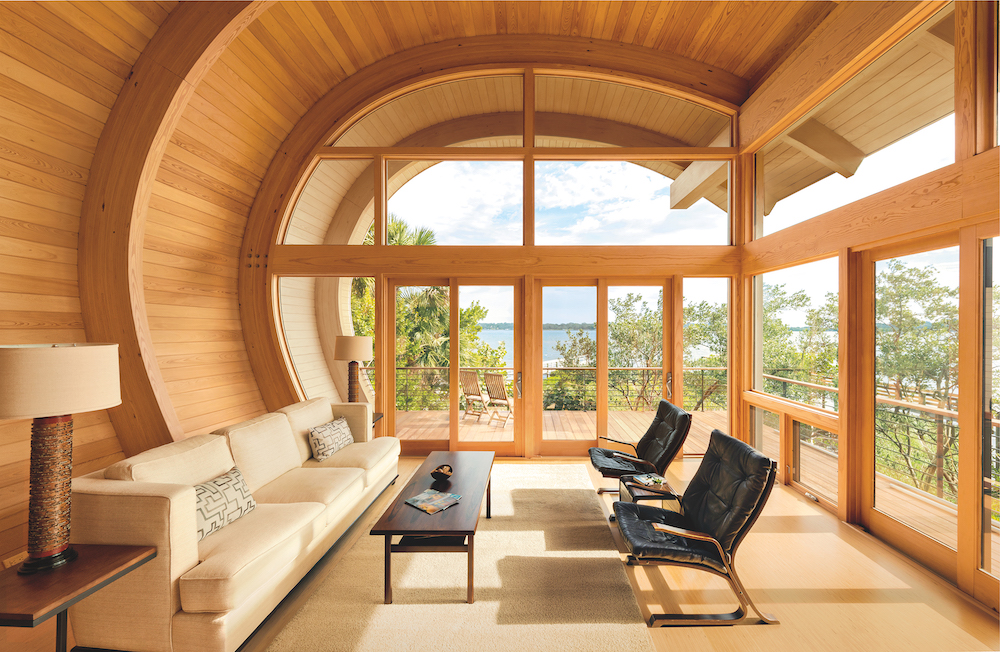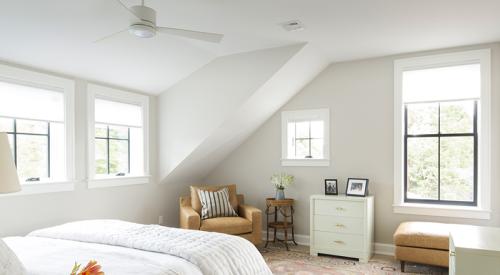You might think you know wood – but do you know wood for windows and doors? The properties that make certain woods ideal for some construction projects might make them less ideal for windows and doors.
This is why Marvin relies on in-house, advanced-degree holding wood scientists to inform their research, design, and manufacturing processes. If you’re advising clients on what type of wood might be best for windows and doors, you’ll want to know why their wood scientist, Ben Wallace, thinks pine is extremely underrated and oak can be a bit high-maintenance.
Follow Ben Wallace’s advice to provide the best window and door solutions for your customers.
Consider Window and Door Materials
A company that knows wood and material attributes can help customers avoid paying more for a species that will not benefit them in the long run.
“You don’t buy pine flooring because it dents and dings too easily,” explains Wallace. “But for a window, density is less important. People don’t walk on windows, so they get minimal wear and tear. Instead, what you need is for the window to not to shrink or swell too much and to be structurally strong but not overly rigid. Pine really fits the bill for windows.”

Ensure Proper Window Design for Durable Products
Although it may seem counterintuitive, the strength of wood does not translate directly to window and door performance. Douglas Fir is technically stronger than pine, but if a pine window is designed correctly, it will be strong enough for daily use. A poorly designed window made with Douglas Fir, even though it might be made with a stronger wood, will not last as long as a smart design with pine.
“Material attributes are important, but the way the window or door is designed and its careful construction are what will determine its performance and longevity,” says Wallace. “That’s why we have experts on staff at Marvin who collaborate on the best way to design products. Our expertise is in looking at each product as a whole, not just the materials individually. We look at how a product performs and how each component works together.”
Understand the Wood/Moisture Relationship
Designing with wood is really about understanding the wood/moisture relationship and how to prevent water from standing on the wood. If you can keep wood dry, it can last thousands of years.
Wood needs to be properly dried for dimensional stability, which significantly impacts product quality. Most drying mistakes can’t be fixed. They appear in products and you can’t see them until it’s too late.
For example, oak shrinks and swells more than other species, and it is more difficult to dry. Thus, it must be handled well.
“Having good wood suppliers that understand the need for dry wood and how to properly operate their kilns is essential,” explains Wallace. “Every board that comes into a Marvin manufacturing facility gets scanned for moisture content. Wet boards are sent to a kiln to bring the moisture to the target level.
Consider Sustainable Sourcing for Wood Materials
A wood like mahogany can be a threatened species in certain regions. Knowing where wood is being sourced is essential. Ideally, it would come from a well managed forest, where harvests and regeneration are regulated to ensure sustainability.
“By responsibly importing mahogany from managed forests with FSC certification, Marvin is helping to keep forest ecosystems intact,” explains Wallace. “Everything Marvin buys is certified because we want to know where it’s coming from.”
Effective material choices are essential for helping clients make better window and door decisions. Marvin relies on expert knowledge to design and manufacture durable, high-quality products so you can best serve your customers. Follow Ben Wallace’s advice to find the best products for your project.
The Marvin Family of Brands approaches materials differently, click here to learn more.











